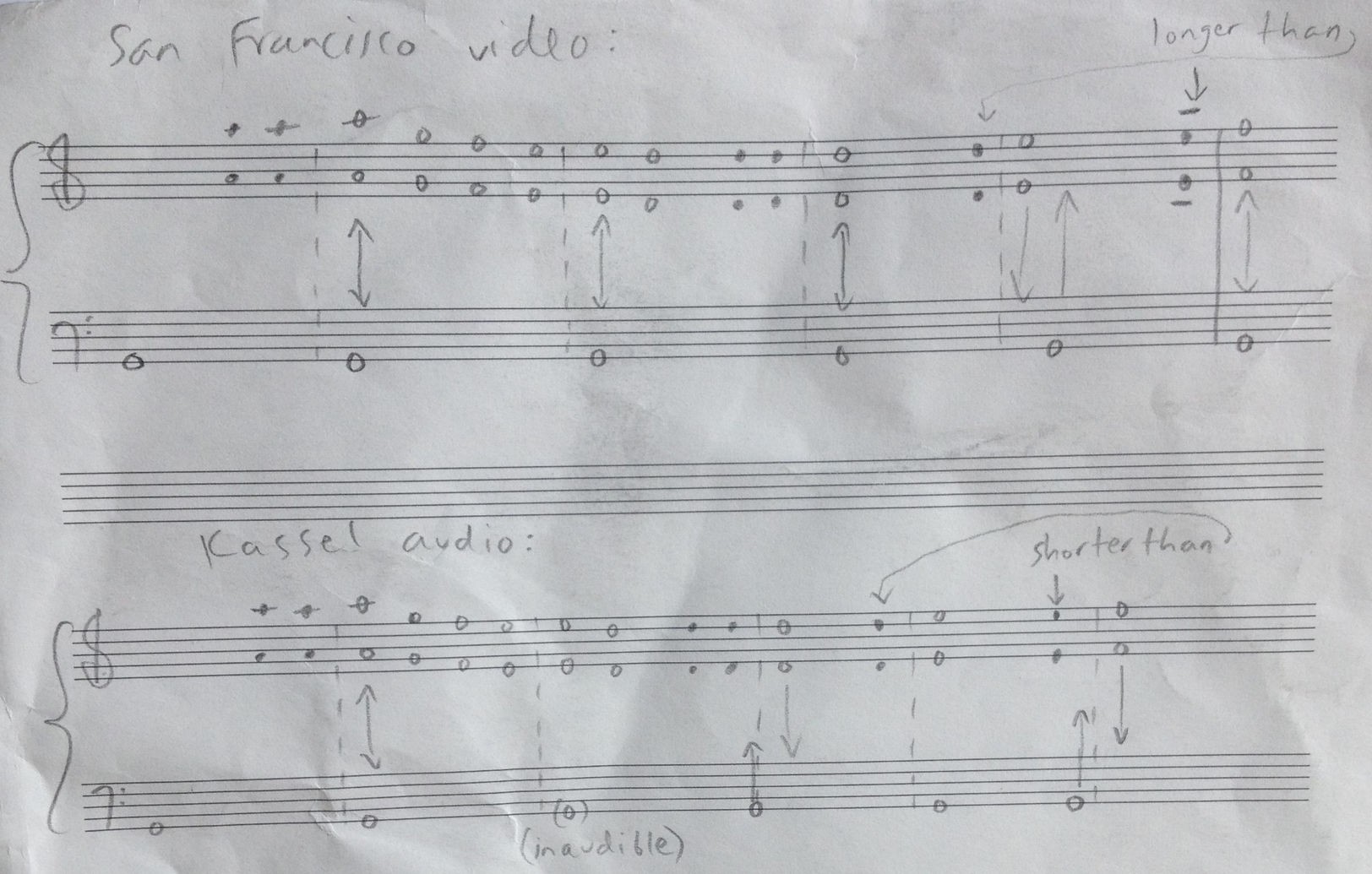video above: live in San Francisco, CA, USA on August 12th, 2016
audio below: live in Kassel, Germany on March 6th, 2016
There are many possibilities available when realizing a musical work in performance, and the process of looking for and layering space where improvisation can take place during pianistic practice without the presence of any specific score expands the options available to the musician when realizing a score in performance. Performing a musical work could be considered a materialization of one set of options within the plausible realm of what the score could inspire the musician to do. And, true to the nature of all music-making, no one materialization may be the same, each performance yielding a different “sonification” to be catalogued as part of the particular musical work. The working methods presented in this project influenced the way I perform Schumann’s Fantasy in ways that are audible in local moments as well as through general overarching trends in the piano playing.
The way local moments are performed differently during subsequent realizations of a score is the result of experimental practice methods presented in the subchapter Practicing; these methods include experimenting with rhythm and tempo modification, arpeggiating vertical structures, playing dissynchronously, and realizing different articulation and dynamics. These practice methods relate to some degree to the music as notated but expose various ways of realizing the notated music in performance. An audible example of this can be heard in the way the first phrase is realized differently in each performance. In the San Francisco video recording, the fifth low G bass note comes after its corresponding melody note (E) and the second E in measure five is performed shorter than the second D in measure four. In the Kassel audio recording, the fourth low G bass note comes slightly earlier than its corresponding melody note, and the sixth low G comes much earlier. The second E in measure five is performed longer than the second D in measure four. I claim that these variations between each performance are a result of improvisation and are not decisions that were pre-meditated. See this notated transcription of the micro-timing apparent in these two recordings:
General practice strategies that are less local and affect the piano playing in more “generic” ways include practicing the music in all twelve keys, realizing harmonic reductions, finding possibilities to re-arrange pitch content, and/or experimenting with character distinction (also addressed and described in further detail in the subchapter Practicing). While none of these methods are explicitly audible in the two recordings, the performances are very much a result of this kind of practicing. As addressed in more detail in the Conclusion, I make a distinction between performing and practicing due to the element of public presentation in the former, which is therefore more subject to parameters involving the presentation of art. Conversely, practicing, an important topic in this project, is less subject to the conditions of presenting music as art and leaves its mark on the way the music unfolds in a performance. It should be acknowledged, however, that the pursuit of experimentation while practicing does not necessarily lead to a drastically wider variety of realizations of the score in public performance. In fact, the experimental methods discussed here can also lead to deeper convictions and more consistent performances. In the recordings presented above, for example, the general tempi of all the movements and the over-arching sense of phrasing of the melodic material do not vary significantly. I argue that this is due to the other authenticities guiding the performance besides the “personal authenticity” of the performer. (A thorough discussion of musicologist Peter Kivy’s authenticities and how they guide musical practice can be found in the chapter On Sonic Signature). While the practicing methods exposed in this project clearly help a performer to develop his or her own approach to the score – what Peter Kivy calls the “personal authenticity” and what I refer to as the performer’s sonic signature – a performance is also necessarily guided by other parameters, other “authenticities.” These include considerations regarding the composer’s intentions, the sonic authenticity of either the composer’s or the audience’s milieu (or both), the idea of pursuing a particular, often historically informed approach to performance practice, and the consideration of how an audience may perceive a performance. Roland Jackson describes this last factor as the “sensible authenticity – the meaning attached to a performance by its audience” (Jackson 1997, 1-2); and alongside the conscious pursuit of my own sonic signature, the “sensible authenticity” I maintain towards audiences serves as the next main guiding force for my public performances.
